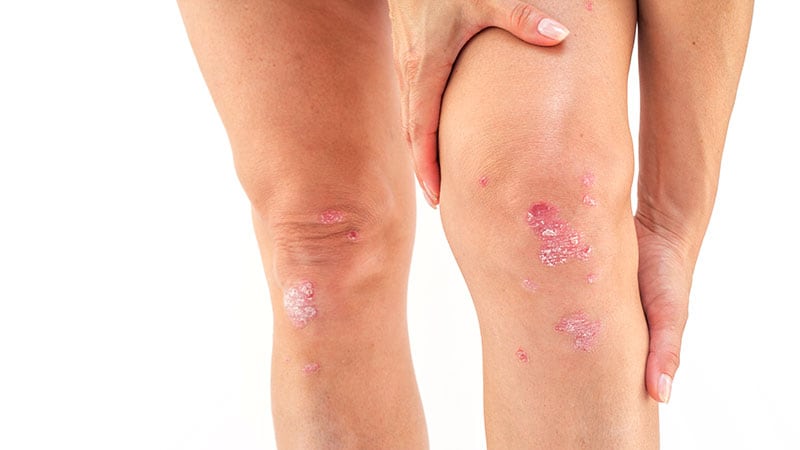Takeaway
- In patients with moderate-to-severe psoriasis, ixekizumab and brodalumab provide the most rapid skin clearance and quality of life improvement within 12 weeks compared with other biologic treatments such as secukinumab, ustekinumab, guselkumab, adalimumab, and etanercept.
Why this matters
- Direct head-to-head comparisons of response rates of biologics are rare, and none conducted to date has measured the speed of onset as a primary outcome.
Study design
- Network meta-analyses included phase 3, randomised controlled trials (RCTs) of patients with moderate-to-severe psoriasis treated with interleukin (IL)-17, IL-12/-23, IL-2 or tumor necrosis factor inhibitors.
- Main outcomes: improvement in Psoriasis Area and Severity Index (PASI) score (≥75/≥90/100) at 2, 4, 8 and 12 weeks and Dermatology Life Quality Index (DLQI) score at 12 weeks.
- Funding: Eli Lilly and Company.
Key results
- The relative treatment effects (average rank) of brodalumab and ixekizumab on PASI (75/90/100) score were as follows:
- brodalumab:
- On PASI 75 score at:
- 2 (1.165);
- 4 (1.007); and
- 8 (1.953) weeks.
- On PASI 90 and 100 scores, respectively, at:
- 2 (1.130 and 1.224);
- 4 (1.001 and 1.100);
- 8 (1.848 and 1.999); and
- 12 (3.173 and 3.248) weeks.
- On PASI 75 score at:
- Ixekizumab:
- On PASI 75 score at:
- 2 (1.835);
- 4, (1.993); and
- 8 (1.048) weeks.
- On PASI 90 and 100 score at:
- 2 (1.871 and 2.551);
- 4 (2.001 and 1.900);
- 8 (1.152 and 1.001); and
- 12 (1.099 and 1.182) weeks.
- On PASI 75 score at:
- brodalumab:
- At week 12, compared with other biologic therapies, relative treatment effect (average rank) on DLQI score was higher with:
- brodalumab (2.120);
- ixekizumab (1.207); and
- secukinumab (2.680).
Limitations
- Heterogeneity across studies.
References
References



